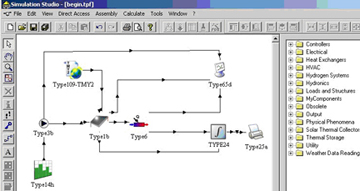![]() Distributed Control of Residential Energy Systems (DCRES)
Distributed Control of Residential Energy Systems (DCRES)
PIs: Prof. Jungho Kim and Dr. Nikhil Chopra
Introduction
Residential space heating and cooling typically consumes about half of the energy used in a household, and about 9% of the total energy consumed in the US. Reduction in home energy use can be achieved through the use of better insulation, more efficient appliances and lighting, and use of efficient heat exchangers. Another technique to reduce energy consumption is through smart thermostat control strategies. The vast majority of new and existing residential construction utilizes a single sensor for control of HVAC systems. It has recently been demonstrated that smart control of thermostats using multiple, distributed sensors can decrease energy usage up to 79% in cooling systems operating in dry climates (Pleasanton, CA). The mechanism by which this is achieved is currently unclear, however.
Experimental Work
We are investigating the effectiveness of using multi-sensor, single actuator control of HVAC systems in a single family, two-story, 2350 ft2 detached home in the mid-Atlantic region during summer cooling as well as winter heating. Temperature and humidity sensors will be distributed throughout the home and wirelessly networked to a single controller to monitor the effectiveness of various control strategies throughout the year. The quantity to be monitored is the ASHRAE-defined Predicted Percent Dissatisfied (PPD), a quantity that combines the effects of temperature and humidity into a single perceived measure of comfort. Control strategies to be tested include single point control, control of the average of all monitored PPD, minimizing the aggregate PPD of all rooms, and maximizing the number of rooms to be below a threshold PPD.
Simulations
Simulation of the control strategies will be performed using building energy simulation software to validate the experimental results and provide insight into the mechanisms by which energy consumption is reduced. They will also be helpful in determining the energy cost function that may be optimized by the aforementioned control strategies. Furthermore, the simulations will also be used for testing dynamic models for the house. One of the benefits that emerge from such a modeling strategy is that a hybrid selection of the aforementioned schemes, rather than a single strategy, may be more effective at reducing the overall energy consumption of the house. Possible buildings simulation software around which drivers will be constructed are DOE-2 and TRNSYS.
Expected Outcomes
The performance of various control strategies for winter heating as well as summer cooling in a humid environment will be experimentally evaluated and compared with simulations to evaluate their effectiveness. The simulations will also help in creating a system theoretic model for the thermal dynamical system.

Example of wireless environmental sensor (Crossbow Technology)
 Example of Simulation Software (TRNSYS)
Example of Simulation Software (TRNSYS)

